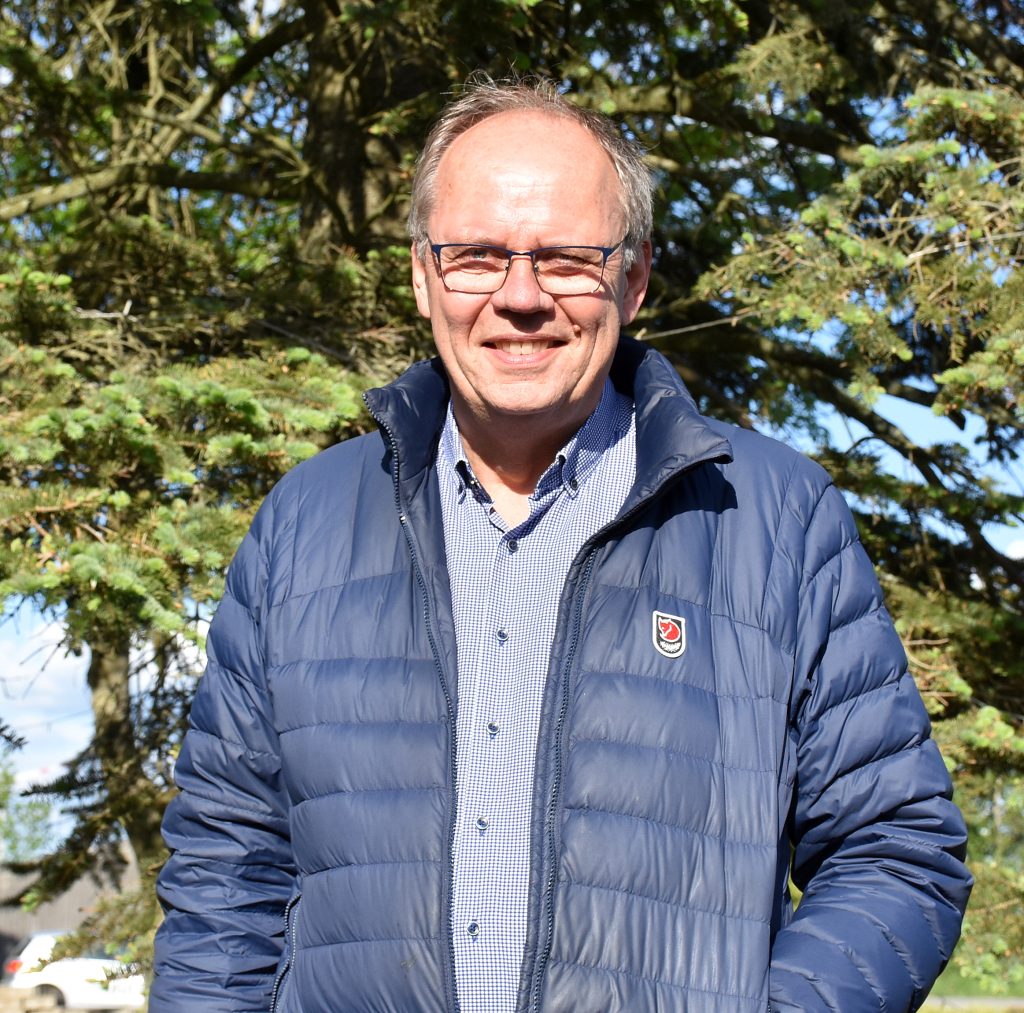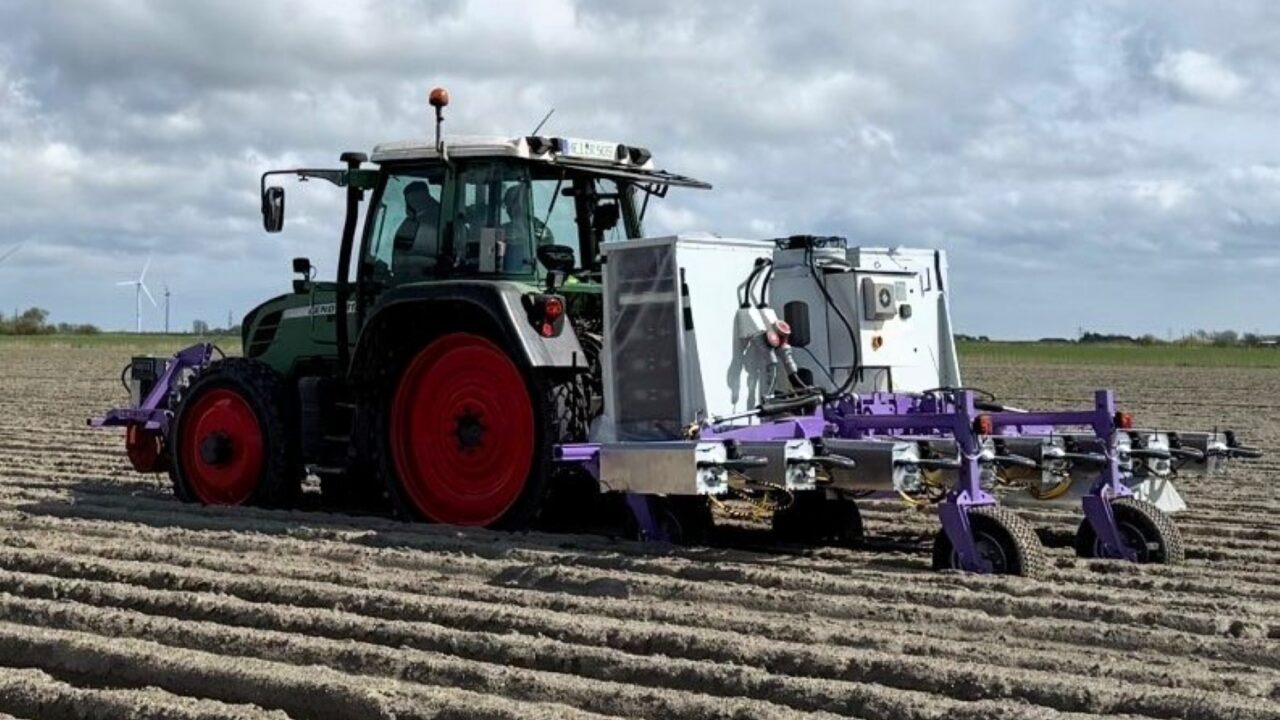Weeding is one of the most tedious, time-consuming and costly jobs on a vegetable farm, and with labour becoming harder to source, farmers desperately need alternatives.
And it is for that exact reason German vegetable farmer Rainer Carstens decided to develop his own laser weeder to try and control his weeding costs, which had accumulated to over €200,000 per year.
Rainer and his family run the Westhof Bio Group, which is a big organic vegetable growing farm in the north of Germany that prepares and sells most of its produce to the frozen market.
Based at Dithmarschen, in Schleswig-Holstein, the Westhof company has been owned by the Carstens family since 1972, with Rainer taking over the helm in 1978 with just 60ha of land owned.

Today, the business has grown to cultivating around 1,200ha and is Germany’s only pure organic vegetable freezing facility.
Produce from other organic farmers is sourced and marketed as part of the Westhof Bio business.
Weeding and labour
With 150 full-time staff, boosted by another 150 seasonal staff, Westhof produces 30,000t of fresh vegetables, 10,000t of frozen vegetables, 2,500t of greenhouse vegetables, and 1,500t of vacuum vegetables per year.
The farm grows a wide variety of produce, including: carrots; cauliflower; broccoli; peas; spinach; kale; fennel; parsnips; and potatoes.
With such a vast area of crops to manage, the annual bill for weeding was hitting over €200,000, which prompted Rainer to take action and source alternatives to manual weeding.
Rainer said: “Being an organic farm, we obviously could not use chemicals to destroy the weeds, and therefore we were relying on manual labour to do so, at a huge cost.
“This is not only extremely expensive but also very labour-intensive, and finding workers is becoming increasingly difficult.
“Our goal was to develop a sustainable, automated, and chemical-free alternative that makes organic farming more economically viable,” he said.
Rainer had some ideas in mind of what he wanted to achieve and set about his plans back in 2014, joining forces with the West Coast University of Applied Sciences.
“The machine is an autonomous agricultural robot designed for non-chemical weed control, specifically in organic farming.
“The development has been an ongoing process carried out by Vitali Czymmek, head of research and engineering, at the university,” Rainer explained
In 2019, the project was spun off into Naiture GmbH & Co. KG, part of the Westhof Bio Group, and the developed patents were acquired.
Latest model
The latest and most advanced version of the Naiture robot, which is an autonomous trailer robot pulled by a tractor, was completed in early 2025 and has been in continuous operation, mostly in carrots, since April.
The new Naiture robot has three main parts, including the platform, the ‘eyes and brain’, and the ‘hands’ that do the physical weeding work.

The ‘eyes and brain’ are high resolution cameras that constantly monitor the field, taking numerous images that are used for the detection and processing of weeds.
These images are processed in real time by an energy-efficient embedded computer. A custom artificial intelligence (AI) model analyses the images, identifies weeds, and calculates their exact position.
Once a weed is identified, a high-precision laser system, or the ‘hands’ of the machine, takes over. The laser beam is directed by a scanner system with tiny, fast-moving mirrors.
This allows the robot to aim the laser with millimetre accuracy and destroy the weed’s growth centre, killing it instantly without disturbing the soil or the nearby carrot plants.
Rainer said: “The main function of the machine is fully autonomous weed control, especially for the difficult task of intra-row weeding, that is, removing weeds directly within the crop rows without harming the actual crop plants.
“It autonomously navigates the field, uses AI to distinguish weeds from crops in real-time, and then eliminates the weeds with pinpoint accuracy using a laser.
“The machine we have now is an advanced prototype. It has been successfully tested under real field conditions. The clear goal of this technology is the development into a commercial product for the next season.
“Our machine uses 200W lasers. The key isn’t just raw power, but precision and energy efficiency, because we target the weed’s growth centre so accurately.
Rainer explained that the device is incredibly fast. To keep up with a practical driving speed of 0.5km/h to 1km/h, the system needs to destroy each weed in less than 40-150 milliseconds, based on the weed type and growth stage.
The current Naiture prototype is designed to operate at a continuous speed of about 0.5km/h to 1km/h per row.
In the current setup used at Westhof with a 6m working width, the robot can weed between 6-8/ha per day.

